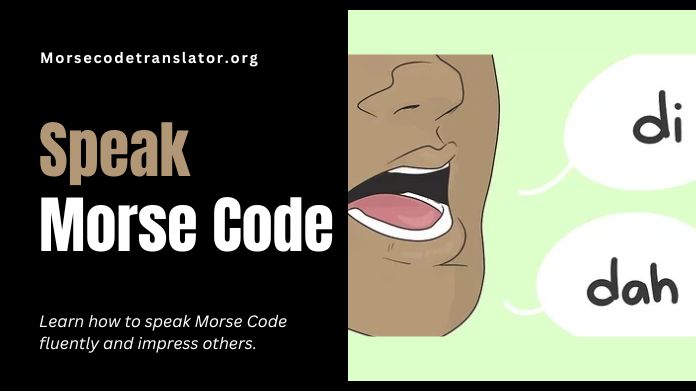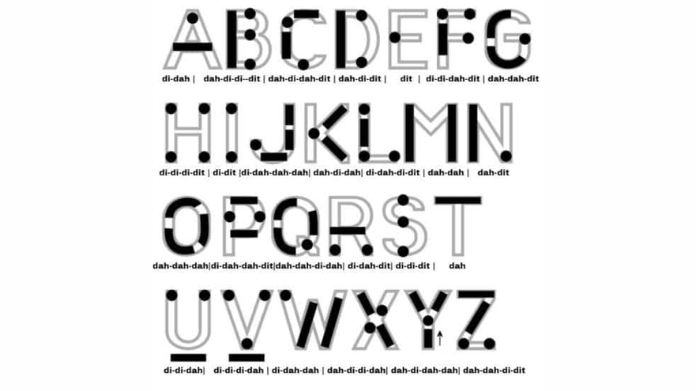In a world where rapid communication is the norm, the ability to “speak Morse Code” adds a unique dimension to your linguistic repertoire. As we embark on this exploration, we’ll start with the basics, breaking down Morse Code’s fundamental elements and decoding techniques.
Beyond its historical significance, Morse Code continues to find applications in various domains, showcasing its adaptability in today’s technological landscape. Join us on a journey through the past and present as we uncover the secrets behind this fascinating language.
By the end of Morse Code Translator guide, you’ll not only grasp the essentials of Morse Code but also gain an appreciation for its enduring relevance and the unique charm it brings to the world of communication.
Let’s dive into the world of dots and dashes, decoding the language that has stood the test of time and learning to “speak Morse Code” fluently.
How to Speak Morse Code?

Speak Morse Code involves understanding and interpreting sequences of dots and dashes to convey letters, numbers, and symbols.
Here’s an essential guide on how to talk to Morse Code:
1. Learn the Morse Code Chart: Familiarize yourself with the Morse Code chart, which represents each letter of the alphabet, numbers, and common symbols with specific combinations of dots (short signals) and dashes (long signals).
2. Master the Basics:
- A dot represents a short signal.
- A dash represents a long signal.
- The space between dots and dashes within the same letter is paused.
- The space between letters is a longer pause.
- The space between words is an even longer pause.
3. Practice Alphabets and Numbers: Start by practicing the Morse Code for each letter of the alphabet and numbers. Begin with simple words and your name.
4. Use Flashcards or Apps: Utilize flashcards or Morse Code learning apps to reinforce your understanding. Regular practice is crucial for memorization.
5. Listen and Repeat: Listen to Morse Code audio or use apps that generate Morse Code sounds. Practice recognizing the characters by ear and repeating them.
6. Increase Speed Gradually: As you become more proficient, increase the speed of your Morse Code transmissions. The goal is to eventually reach a level where you can understand and produce Morse Code comfortably.
7. Join Morse Code Communities: Engage with online forums or communities where Morse Code enthusiasts gather. Participate in conversations using Morse Code to enhance your skills.
8. Apply Morse Code in Real Scenarios: Challenge yourself by using Morse Code in practical scenarios. Send messages to friends or decode signs with Morse Code information.
Remember, learning Morse Code takes time and practice. Consistent effort and exposure to Morse Code will help you become more fluent in this unique form of communication.
Morse Code Pronunciation Rules

There are just two basic rules when it comes to speak Morse code or writing in Morse code:
- A dot is spelled and pronounced “di” (like dip without the “p”) unless it is the last dot or dash representing the letter, then it is pronounced “dit.”
- A dash is always spelled pronounced “dah” (like dawn without the “n”).
Morse Code Timing Rules
The timing in Morse code is based on the length of one dot or “dit.” From there, you use the length of that “dit” as a unit of time.
- Dot= 1 unit of time
- Dash = 3 units
- The gap or space between dots and dashes for a character = 1 unit
- The gap between the characters of a word = 3 units
- The gap between two words = 7 units
The letter “h,” for example, is four dits or “di-di-di-dit,” so there would be one unit of time between each “dit.”
In other words, your dash (or “dah”) will be three times longer than a dot (or “di”), and the space between two characters in a word will also be three times longer than a dot (or “di”).
After spelling a word, you would leave a space seven times longer than a “di” (dot) or seven units of time. Since not everyone can communicate in Morse code at the same speed, it depends on how quickly you can send a dit.
Here are two more examples to help make the timing rules even more explicit:
Example: (SOS in Morse code is “… — …”)
This is written or spoken “di-di-dit dah-dah-dah di-di-dit.”
In this example, there are 21 total units of time, 6 for the dits(one each), 9 for the dahs(3 each), and 6 for the spaces in between the letters(3 each).
So if it takes you 1 second to send a dit, the whole SOS message should take 21 seconds total.
Conclusion
In wrapping up our guide, we’ve navigated the intricate world of Morse Code, unraveling its historical roots, structural nuances, and contemporary applications.
As you delve into the art of decoding messages through dots and dashes, you not only connect with a bygone era but also acquire a valuable skill. Morse Code transcends time with its simplicity and adaptability, proving its relevance even in today’s high-tech landscape.
So, whether you’re looking to impress with a unique skill or appreciate the beauty of linguistic ingenuity, the ability to speak Morse Code adds a distinctive flair to your communication repertoire. Embrace the dots and dashes – happy decoding!
